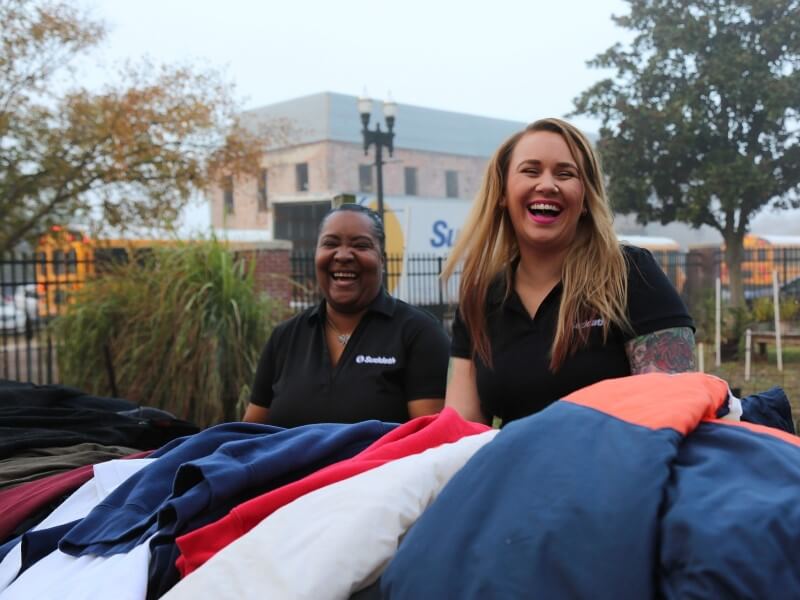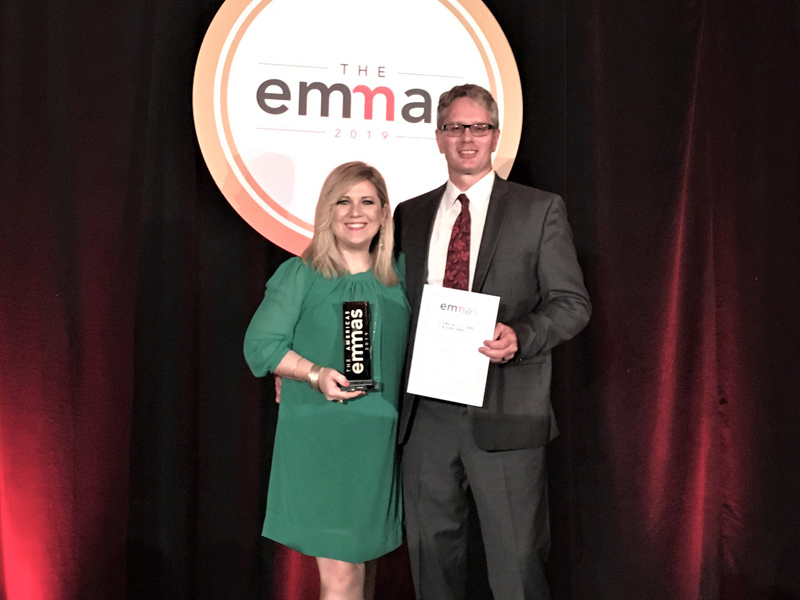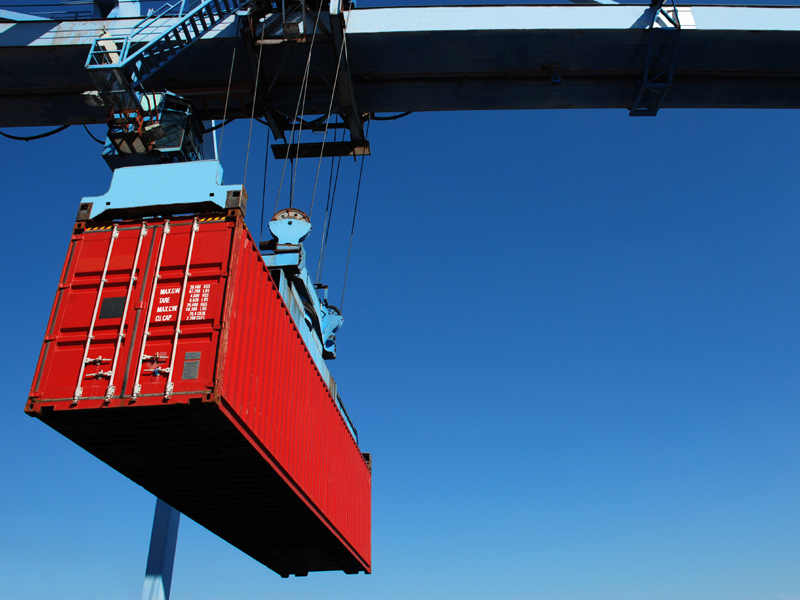Business Service
Sort By
Search News Posts
All

January 2, 2026
Read More
Suddath Workplace Solutions Appoints Joshua Frankel as Chief Commercial Officer

December 9, 2025
Read More
Suddath Appoints Jason Jurchuk as Vice President and General Manager – San Jose

November 5, 2025
Read More
U.S. Government Shutdown: Suddath is Monitoring the Impact on International Shipments

October 10, 2025
Read More
Jacksonville Steps Out for the First Coast Heart Walk

July 31, 2025
Read More
Teela Gleason Honored with WERC® Meritorious Service Award

June 3, 2025
Read More
Suddath Participates in JAXUSA Partnership’s Transportation & Logistics Educator Externship

May 5, 2025
Read More
News Alert: Northern Europe and Mediterranean Port Delays

May 2, 2025
Read More
Suddath Appoints Rich Greco as President of Workplace Solutions

March 13, 2025
Read More
Suddath Moving & Storage Wins Gold Stevie® Award for Global Account Management Team of the Year

March 4, 2025
Read More
Suddath’s Re-certification of the FIDI FAIM Designation

February 14, 2025
Read More
Suddath Partners with ecolegIT for a Greener Future in Moving

October 9, 2024
Read More
Suddath Receives Top Level, Commitment to Excellence Gold Award at Cartus 2024 Global Network Conference

August 9, 2024
Read More
Suddath Welcomes Jamie KuBrock, CRP

June 10, 2024
Read More
Two Suddath Leaders Appointed to Talent Mobility Industry Advisory Councils

May 31, 2024
Read More
Suddath Named International Moving Company of the Year

February 13, 2024
Read More
Suddath Appoints Marissa Kobal New Business Development Director, Moving & Storage in Houston

January 22, 2024
Read More
Atlas® Van Lines welcomes Suddath Moving & Storage LLC

November 8, 2023
Read More
Suddath Announces SBA Mentorship, Acquisition and Joint Venture with Endeavor IO

July 10, 2023
Read More
The Importance of Supporting Van Operators’ Mental and Physical Wellbeing

April 25, 2023
Read More
Suddath’s Tampa/St. Petersburg Team Earns Branch of The Year Award

March 15, 2023
Read More
Suddath Earns Top Awards at UniGroup Learning Conference

December 5, 2022
Read More
Suddath Named 2022 International Company of the Year

December 1, 2022
Read More
Suddath is FIDI FAIM Certified

November 7, 2022
Read More
As Featured in Mobility Magazine

September 28, 2022
Read More
Hurricane Ian: Updates on Suddath Operations and Facility Closures

August 23, 2022
Read More
Suddath Launches New Final Mile Delivery Solution

May 25, 2022
Read More
Suddath to Re-Join the Global Harmony Relocation Network

May 4, 2022
Read More
EY Announces Mike Brannigan of Suddath® as an Entrepreneur Of The Year® 2022 Florida Award Finalist

May 3, 2022
Read More
Suddath Announces 2021 Van Operator of the Year Award Winners

April 22, 2022
Read More
Phase Integration Enhances Digital Experience with Website Redesign

March 25, 2022
Read More
Suddath CIO Len O’Neill named 2022 Florida CIO of the Year®

February 18, 2022
Read More
Suddath’s Central Florida Team Earns Branch of the Year Award

January 17, 2022
Read More
Michelle Beiter Joins The Suddath Companies as Chief People Officer
November 22, 2021
Read More
Suddath Launches Enhanced Suite of Office Moving Technology

September 17, 2021
Read More
Suddath Treats Military Members to Seat Upgrades at Jacksonville Jaguars Home Games

August 31, 2021
Read More
Suddath Voted Best Moving Company Once Again in 2021 Bold City Best Competition

August 27, 2021
Read More
Suddath Earns Runner-Up for Best Overall Safety Program and Culture

April 22, 2021
Read More
Suddath Partners with American Heart Association

April 2, 2021
Read More
Profile: Women in the Trucking Industry

April 1, 2021
Read More
Suddath Acquires Daryl Flood, Inc.

February 9, 2021
Read More
Suddath Earns Recognition in 15th Annual Stevie Awards

December 15, 2020
Read More
Suddath Partners with Jacksonville FC to Spread Holiday Joy to Children in Need

November 9, 2020
Read More
Tropical Storm Eta: Updates on our Response and Operations

November 2, 2020
Read More
Suddath Participates in Mister Rogers’ Sweater Drive

October 30, 2020
Read More
Suddath Named 2020 Best Moving Company and Best Place to Work

September 30, 2020
Read More
Suddath Announces Jira Sansom as General Manager Dallas

August 21, 2020
Read More
Suddath Renews Industry-Coveted FIDI-FAIMPLUS Certification

August 18, 2020
Read More
Suddath Chief Information Officer Honored as Technology Leader of The Year

July 21, 2020
Read More
Suddath Announces Tom Robbins as General Manager Los Angeles

July 6, 2020
Read More
TSP Certification of Health Protection Protocols

July 6, 2020
Read More
Coronavirus (COVID-19) Response Plan

June 30, 2020
Read More
Team ARC Re-Awarded Global Household Goods Contract

June 23, 2020
Read More
Suddath Named in Top 10 Best Places to Work in IT

June 5, 2020
Read More
The Suddath Companies Acquires Phase Integration

May 19, 2020
Read More
Suddath Launches New Website

May 18, 2020
Read More
Announcing the 2020 Suddath Scholarship Winners

April 30, 2020
Read More
Suddath and Consortium of Industry Suppliers Awarded $7.2B Global Household Goods Contract

March 2, 2020
Read More
Operations During Coronavirus Outbreak: Update

December 10, 2019
Read More
California Legislature Passes the Employee and Independent Contractors Bill (AB 5)

November 1, 2019
Read More
Suddath Gives Back to the Community Through Mister Rogers’ Sweater Drive

October 28, 2019
Read More
Suddath Appoints Jana Lowenstein as Director of Business Development

October 16, 2019
Read More
Suddath Voted 2019 Best Moving Company and Best Place to Work

October 8, 2019
Read More
Hurricane Dorian Relief Efforts in South Florida

September 24, 2019
Read More
Suddath Announces Steve Brock as New Business Development Director

September 4, 2019
Read More
Hurricane Dorian Update

August 26, 2019
Read More
Suddath Welcomes Heather McBride-Morse As Chief People Officer

August 19, 2019
Read More
Suddath Sponsors ‘Military Move of the Game’ with Jacksonville Jaguars

August 2, 2019
Read More
Suddath Voted #1 Place to Work and #1 Moving Company

May 28, 2019
Read More
Suddath Wins 2019 EMMA for International Moving Company of the Year

May 17, 2019
Read More
Suddath Wins Best International Removals Provider at 2019 Relocate Awards

May 8, 2019
Read More
Suddath Acquires St. Pete Moving & Storage

May 3, 2019
Read More
Suddath Shortlisted for Best International Removals Provider Award by Relocate Global

April 24, 2019
Read More
Suddath South Florida Sponsors Master Brokers Forum Event

March 27, 2019
Read More
Suddath Shortlisted for FEM’s Moving Company of the Year

March 4, 2019
Read More
Rob Giese Appointed Vice President of Innovation and Change

January 7, 2019
Read More
The Suddath Companies Acquires Perdue, Inc.

December 10, 2018
Read More
Suddath Wins Digital Edge 50 International Technology Award

November 13, 2018
Read More
Suddath Executive Leaders Volunteer with K9s For Warriors

October 30, 2018
Read More
Barry Vaughn Elected Chairman of UniGroup’s Board of Directors

September 28, 2018
Read More
Suddath Voted 2018 Best Moving Company and Best Storage Facility

August 24, 2018
Read More
Global Expansion Leads to Opportunity

August 20, 2018
Read More
Suddath Receives Prestigious CIO Award

July 24, 2018
Read More
Suddath Announces New Bonded Capabilities
July 21, 2018
Read More
Military Moves Update from CEO Michael Brannigan

June 28, 2018
Read More
The Suddath Companies Celebrates Anniversary in Dallas-Fort Worth

May 30, 2018
Read More
Brazil Strikes Impact Transportation

May 29, 2018
Read More
Suddath wins International Moving Company of the Year at the 2018 EMMAs

May 9, 2018
Read More
Suddath Wins CIO 100 Award for Industry Innovation

April 17, 2018
Read More
Suddath Shortlisted for Relocate Award for Best International Removals Provider

March 27, 2018
Read More
Suddath Shortlisted for Two EMMAs

March 21, 2018
Read More
Michael Morrissey of Suddath Named United Van Operator of the Year

March 19, 2018
Read More
Suddath Awarded Partner of the Year

January 8, 2018
Read More
Suddath Partners With The RES Forum as Their Technical Partner for International Moving

January 2, 2018
Read More
Suddath Certifies to New ISO 9001: 2015 Quality Management System

January 2, 2018
Read More
The Suddath Companies Announces Silvio Cavaceppi as New Vice President for Marketing and Communications

November 22, 2017
Read More
The Suddath Companies Renews FIDI-FAIMPLUS certification

November 22, 2017
Read More
The Suddath Companies and Move For Hunger Organize Successful Food Drives for Giving Tuesday

October 6, 2017
Read More
The Suddath Companies Announces New Philanthropic Partnership with Smiles Foundation

September 20, 2017
Read More
The Suddath Companies Awarded the 2017 Best Place to Work
September 11, 2017
Read More
Update on Hurricane Irma
September 7, 2017
Read More
Post Hurricane Harvey Update

September 7, 2017
Read More
The Suddath Companies Wins Prestigious Technology Award
August 28, 2017
Read More
Update on Hurricane Harvey

April 20, 2017
Read More
Suddath Relocation Systems Announces Most Improved Branch of the Year

April 11, 2017
Read More
Suddath Relocation Systems Announces Branch of the Year

March 21, 2017
Read More
The Suddath Companies and Move For Hunger Announce Collaborative Effort to Help Feed Families In Need Nationwide

March 18, 2017
Read More
Suddath Relocation Systems Announces Intent to Acquire Graebel Van Line’s Locations Orlando, Portland and San Jose

March 10, 2017
Read More
Suddath Works to Emerge as a Leader in Hospitality Services

March 10, 2017
Read More
The Suddath Companies Shortlisted for EMMA Award

February 6, 2017
Read More
Suddath Relocation Systems of Jacksonville Wins Top Van Line Agency Award for 2016

January 26, 2017
Read More
The Suddath Companies Awarded Customs and Border Protection National Permit

August 22, 2016
Read More
Suddath Hires Mark Burchell as President, Global Moving Services

August 19, 2016
Read More
Suddath Launches Redesigned Website in Line with New Brand Strategy

May 19, 2016
Read More
Extreme Port Congestion May Cause Shipment Delays and Surcharges

May 1, 2016
Read More
Suddath Recognized as International Mover of the Year

April 15, 2016
Read More
Suddath Announces Charlotte Location Wins 2015 Branch of the Year Award

March 23, 2016
Read More
The Suddath Companies Recognized as a 904 Magazine Companies with Heart

March 15, 2016
Read More
Suddath on CARB Regulations and Potential Effects to your Business

March 1, 2016
Read More
Suddath CEO to Speak at UNF Executive Spotlight in March

January 13, 2016
Read More
Suddath Participates in Annual Trucking Day at the Florida Capitol

November 15, 2015
Read More
The Suddath Companies Announces Retirement of Jim Barnett, Chief Financial Officer

October 1, 2015
Read More
The Suddath Companies Designated as one of Northeast Florida’s Fastest-Growing Private Companies

June 1, 2015
Read More
The Suddath Companies Recognized as one of the 2015 Best and Healthiest Places to Work

May 5, 2015
Read More
The Suddath Companies Appoints Michael J. Brannigan as CEO

March 15, 2015
Read More
The Suddath Companies Announces the Retirement of President and Chief Executive Officer, Barry Vaughn

February 1, 2015
Read More
Suddath Workplace Solutions Announces the Appointment of Mark Scullion as President

November 15, 2014
Read More
Suddath Lead Packer Tony Meindel Receives United Customer Hero Award

November 15, 2014
Read More
Suddath Associate Jose Marrero Elected President of The Pan American International Movers Association

November 1, 2014
Read More
Suddath Hires Len O’Neill for the New Role of Chief Information Officer

November 1, 2014
Read More
Suddath Sponsors a “Visit from St. Nicholas” a Program Through HandsOn Jacksonville

October 15, 2014
Read More
Suddath Recognized as International Mover of the Year by The Forum for Expatriate Management

October 1, 2014
Read More
Suddath Authorized to Operate Foreign-Trade Zone

September 1, 2014
Read More
ISO 9001 Certification Gives Suddath International Elite Status

July 1, 2014
Read More
Hours-of-Service Rules, What are They and What are They Trying to Accomplish

April 1, 2014
Read More
The Suddath Companies Acquires Swartz Moving and Storage in Portland

January 15, 2014
Read More
The Suddath Companies Appoints Frank P. Senatore as Senior Vice President, Eastern Region

January 1, 2014
Read More
Bryan Brownell, Driver for Suddath Relocation Wins 2013 AMSA Super Van Operator Award

January 15, 2013
Read More
Suddath Relocation Systems Takes Top Honors at the 2012 UniGroup Annual Convention

January 15, 2013
Read More
Suddath Hires Michael J. Brannigan for the New Role of Chief Operating Officer

January 15, 2013
Read More
The Suddath Companies Acquires Horizon Moving Systems

January 1, 2013
Read More
Suddath International is Now FAIM Plus Certified

January 1, 2013
Read More
Suddath International Opens Customer Service Center in London to Meet Customer Needs in EMEA

December 1, 2011
Read More